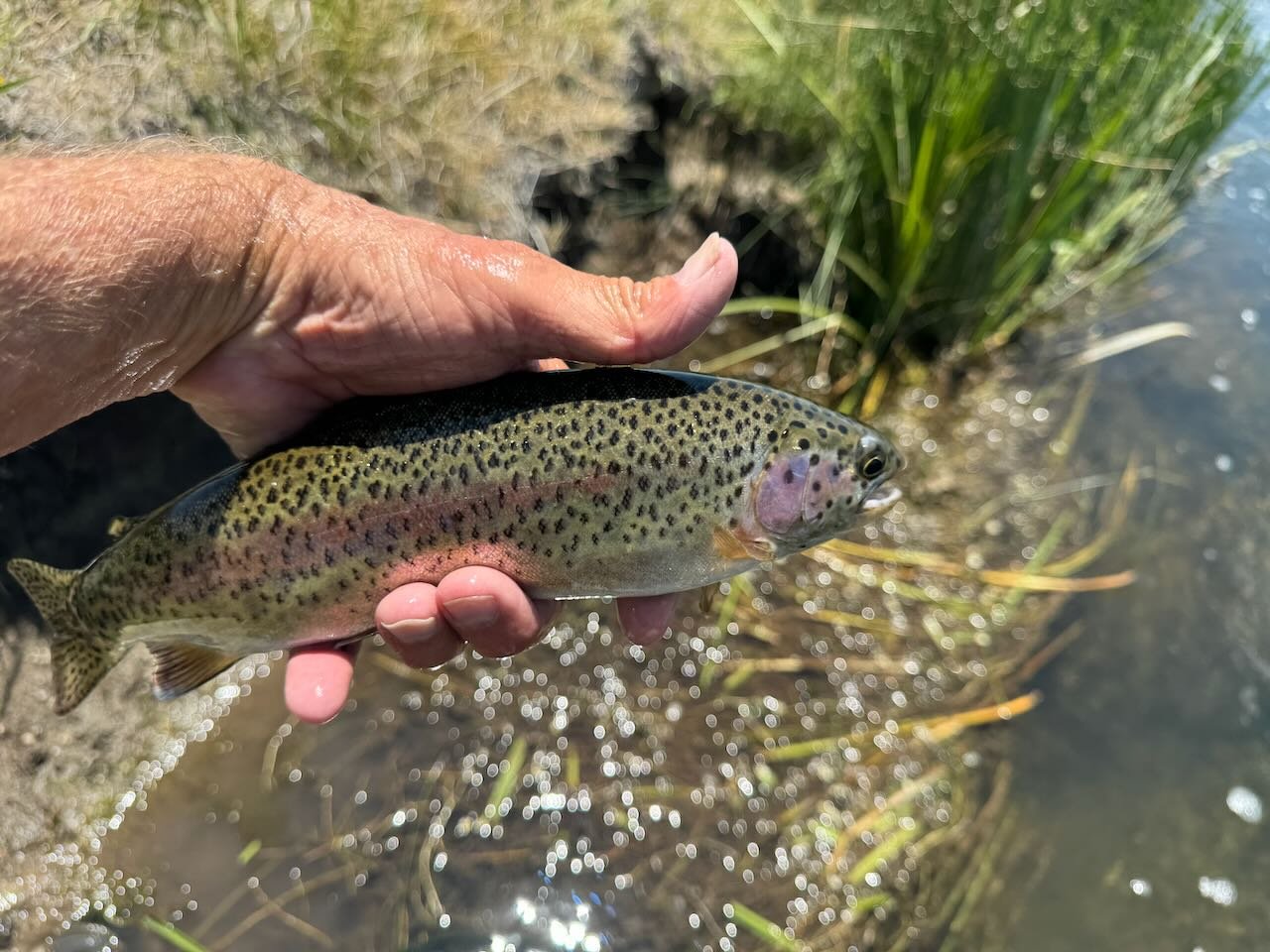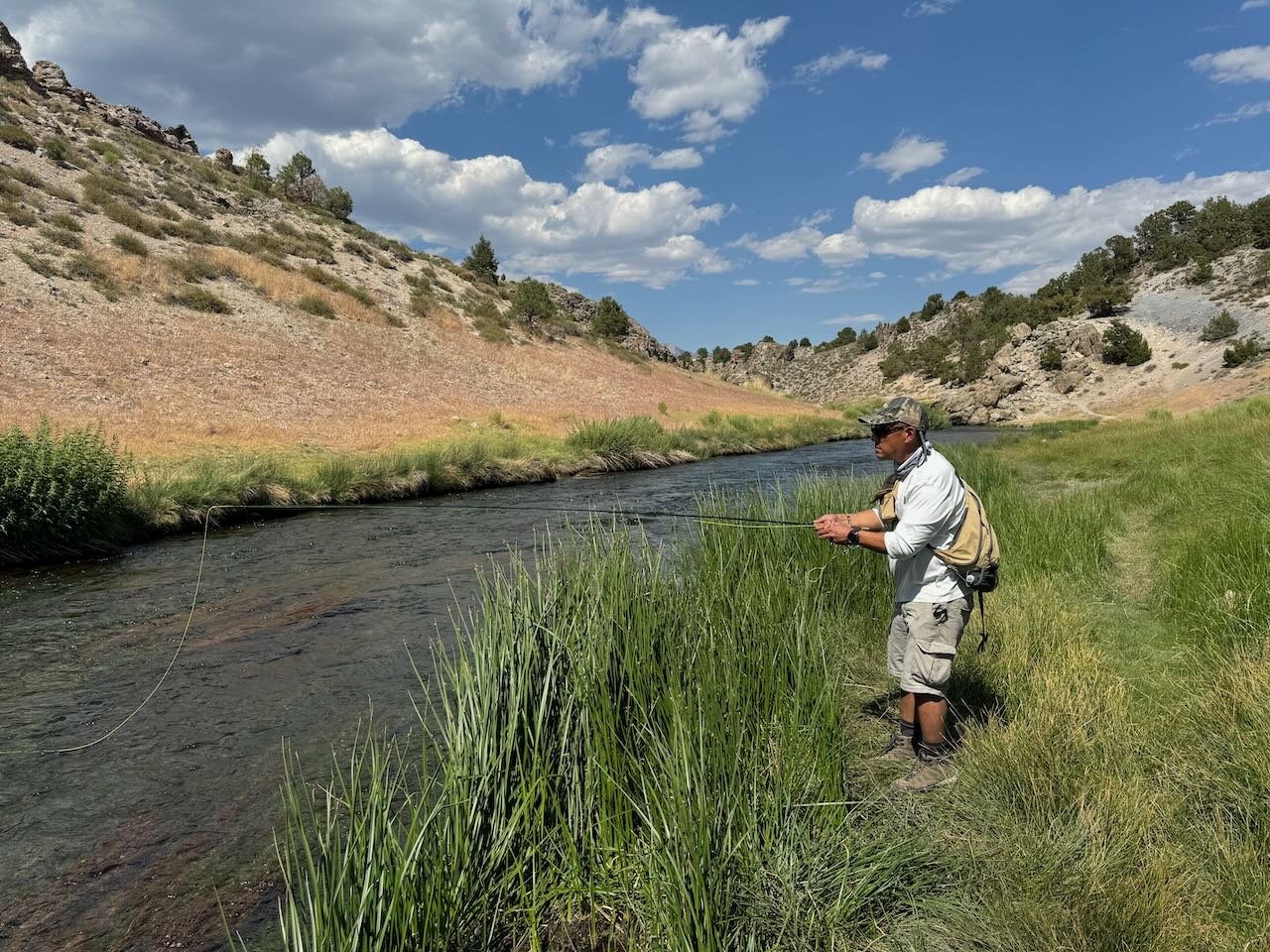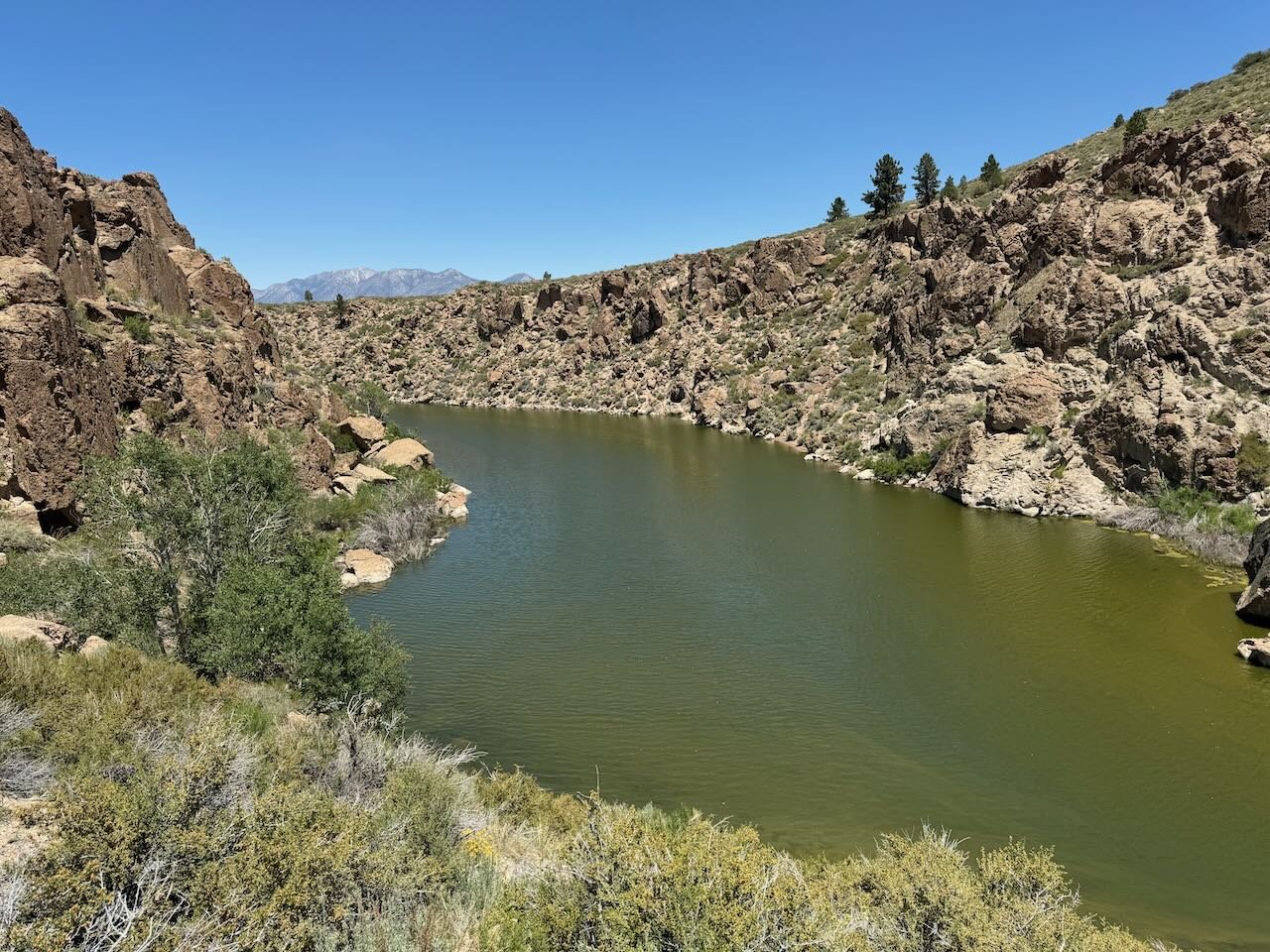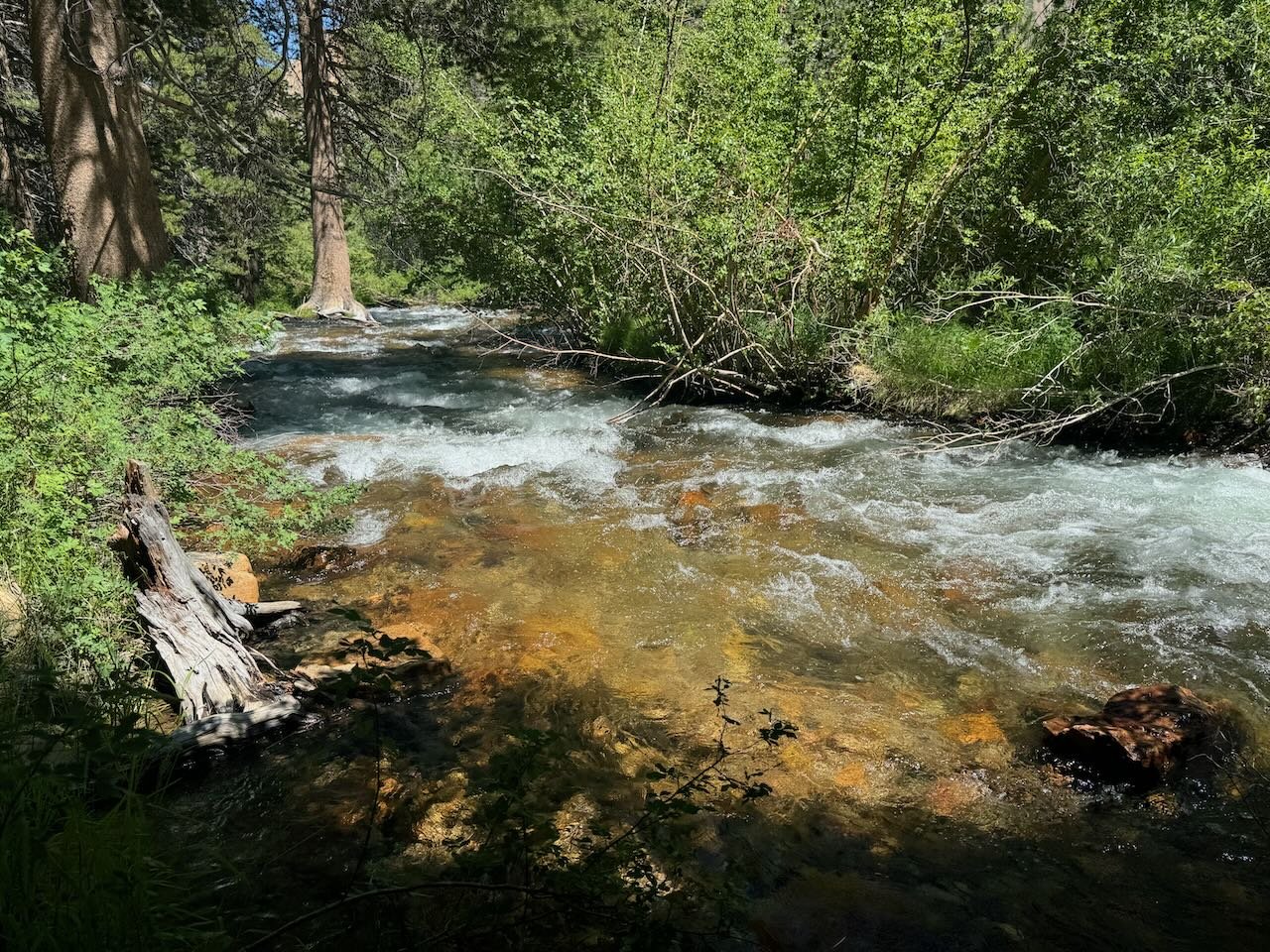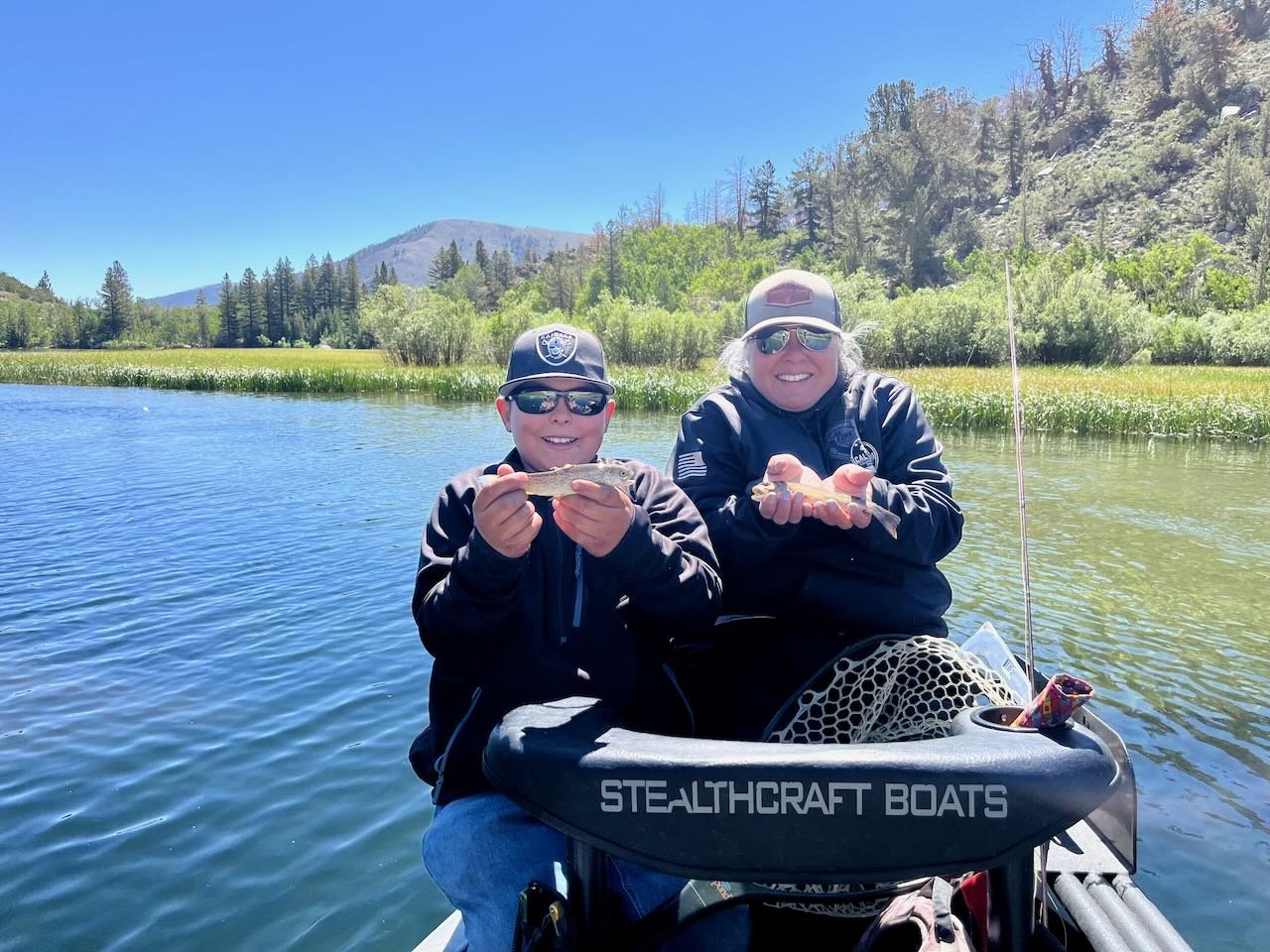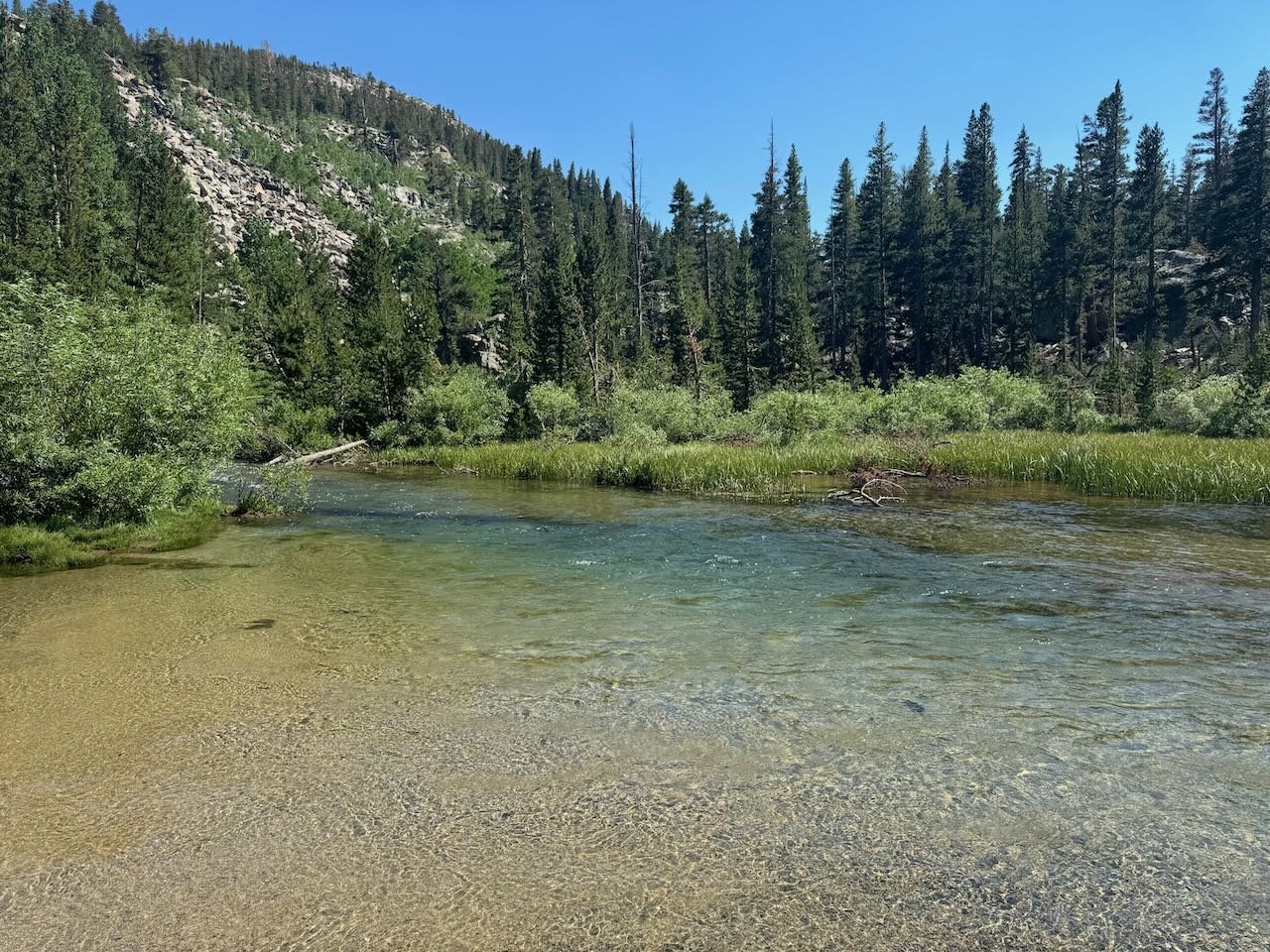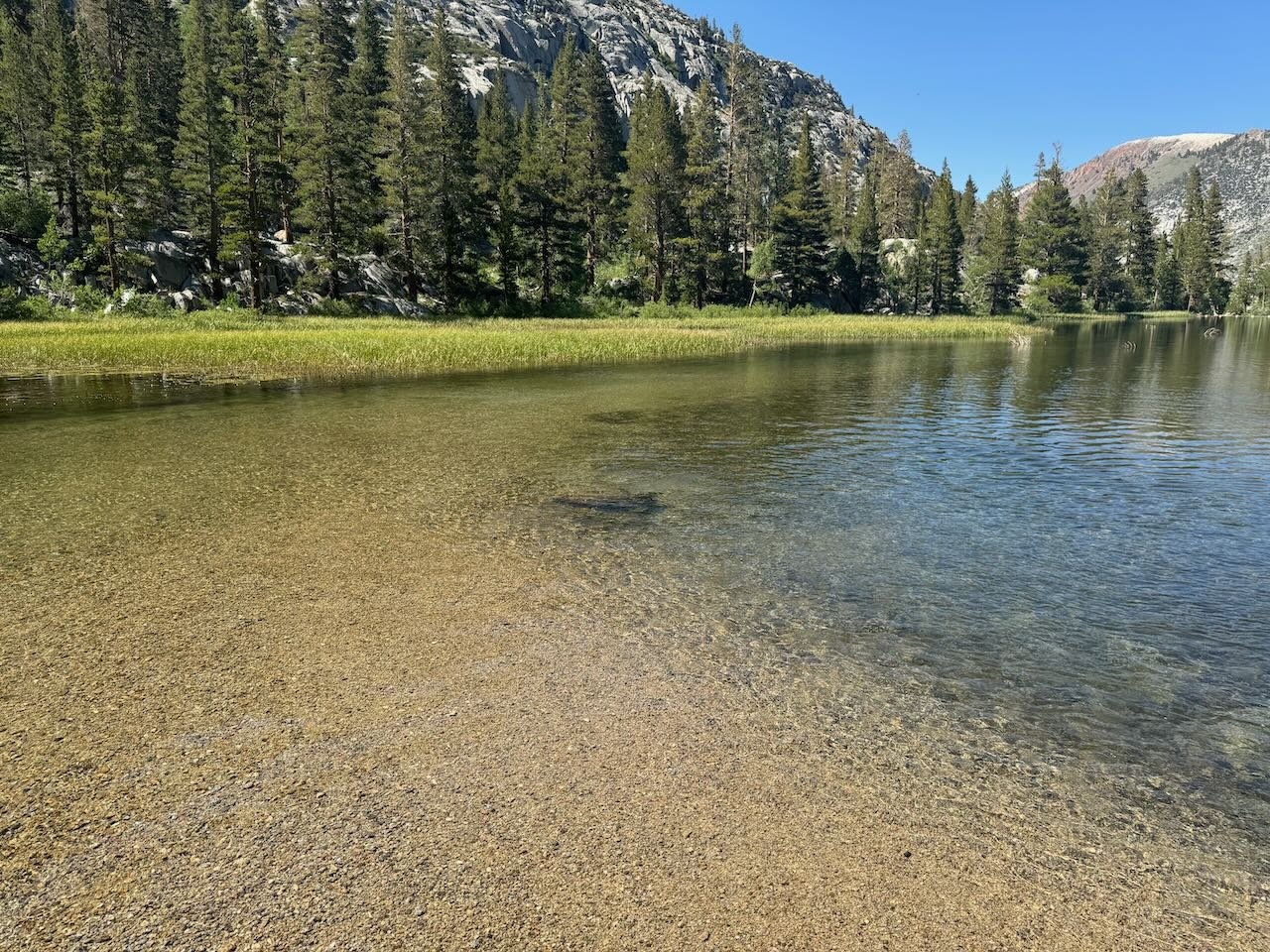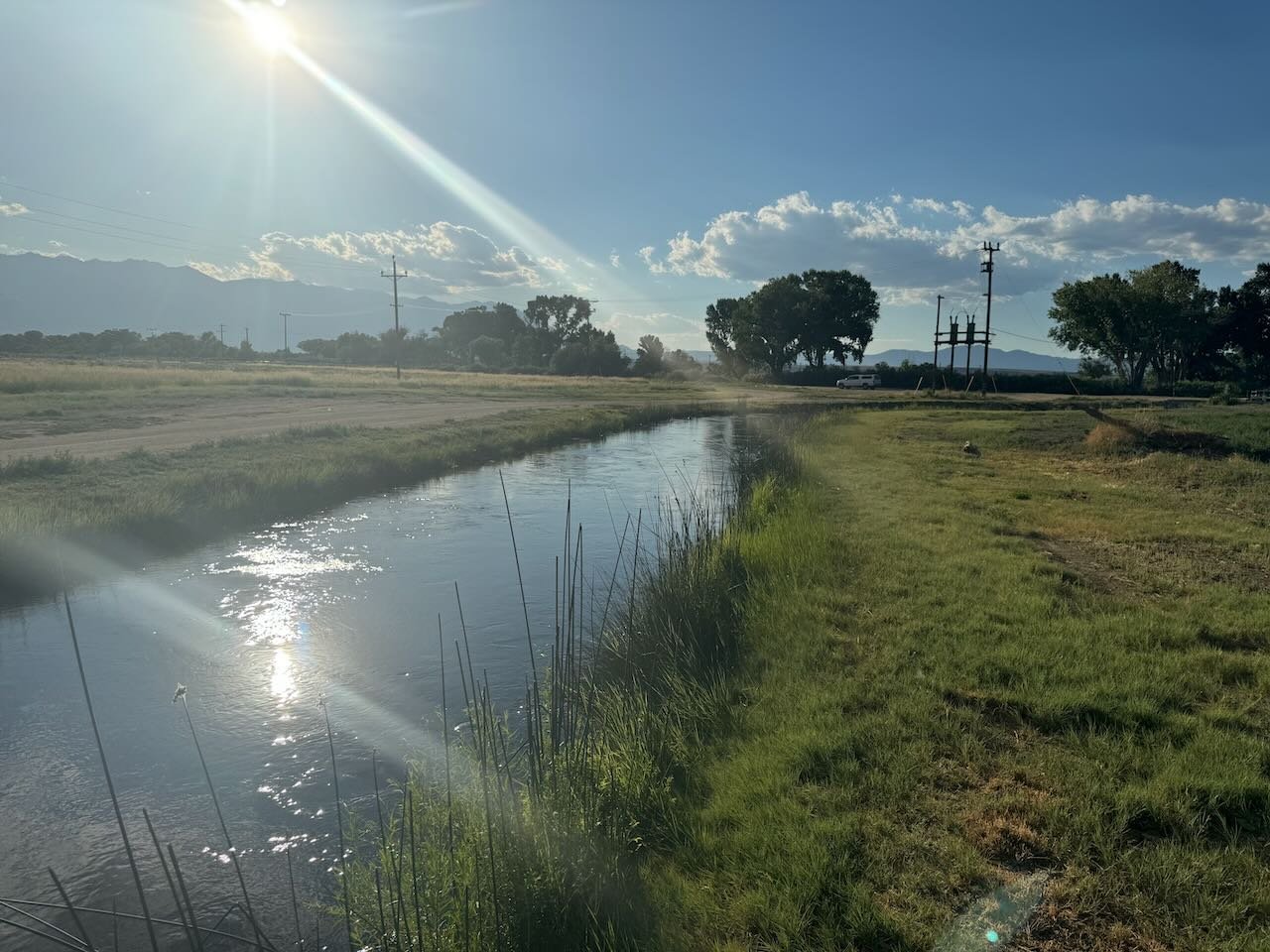Summer is here and now is the time to go fly fishing and make those memories to last a life time. July is the hottest month in Inyo and Mono county and July is starting off with a heat wave. Freestone creeks are cold and still running high. High elevation waters are open to hearty fly fishers willing to hike into the backcountry waters. Mosquitoes are thick particularly in swampy areas near still waters and streams. Hatches of mayflies, stoneflies, and caddis flies are feeding the hungry trout who occupy the waters of the Eastern Sierra. Nymphing, dry flies and streamers are producing trout for fly fishers plying the waters of the Eastern Sierra.
Now is the time to make fly fishing memories on Eastern Sierra fly fishing waters.
East Walker River
Below Bridgeport:
Flows are a at very fishable level and the fishing has been good particularly late and early in the day as day time temperatures have climbed. Nymphing continues to be the most productive method of fly fishing the river. Hatches of stoneflies and caddis have the trout working the surface and taking fly fishers dry fly patterns. For nymphs fish with bead head flash back pheasant tail nymphs, bead head flash back gold ribbed hare’s ears, olive quilldigons, hot spot pheasant tail nymphs, stoners and rust colored La Fontaine’s caddis emergers. On the surface fish with elk hair caddis, X-caddis, EC caddis, blue wing olive parachutes, little yellow stones and stimulators.
Rainbow trout in the East Walker River are feeding on nymphs presented under an indicator.
Hot Creek
Interpretive Site:
Pale morning duns are hatching and the trout are feeding on them as they float on the surface drying their wings. The pale morning duns are hatching mid-day. Size 16 pale morning dun parachutes and size 16 pale morning sparkle duns are fooling the trout. A drag free drift and 5X tippet is going to help you fool the surface feeding trout. The evening caddis hatch has been great. Skittering a size 20 gray elk hair caddis, gray parachute caddis and a gray X-caddis will keep you hooked up.
Steven Uyetanaka working a high vis pale morning dun in the middle section of Hot Creek Canyon.
Hot Creek
Canyon Section:
The weed beds are at full growth and you will have to work your flies through the small lanes between the weeds. If you can get a drag free drift in the tight lanes between the weeds you will catch fish. Nymphing with size 18 bead head flash back pheasant tail nymphs, size 16 split case pale morning dun and size 16 bead head flash back gold ribbed hare’s ears are the flies producing for nymphing. Fly fishing on the surface has been good with pale morning dun parachutes in size 16, pale morning sparkle duns in size 16 and little yellow stones in size 16. Evening caddis hatch is worth getting on the water and fishing with a size 20 gray elk hair caddis, size 20 gray parachute caddis and a size 20 gray X-caddis.
Crooked Creek arm of Crowley Lake is just as green as the rest of the lake from an algae bloom.
Crowley Lake
North Landing:
The North Landing Road is supposed to open on Friday July 5th. I think the lake is still too full for vehicles to access all the lake side roads in the area of Sandy Point to Green Banks. Hilton Bay is still the place for boats and float tubers. There is a small flotilla of boats targeting trout at the inlet of McGee Creek. Tiger midges, zebra midges, blood midges, gray midges and albino Barron’s in size 16 or 18 suspended three inches to four feet off the substrate is producing trout feeding above the mud beds. For the trout feeding in the shallows and around the weed beds us a size 10 marabou damsel nymph, a size 10 olive wooly bugger, a size 14 callibaetis nymph and a size 14 olive gold ribbed hare’s ear.
Nymphing under an indicator is producing three inch to 12 inch wild rainbows and browns on the upper Owens River.
Upper Owens River
Above Benton Crossing Bridge:
Juvenile trout from three inches to 12 inches are feeding on nymphs and dries. The mid-day pale morning dun hatch has the trout actively feeding on the nymphs which are represented with size 16 bead head flash back gold ribbed hare ears, size 16 bead head flash back pheasant tail nymphs, size 16 spilt case pale morning dun nymph and the adults with are represented with size 16 pale morning dun parachute and a size 16 pale morning sparkle dun. Caddis are around all day, but the best time to be fly fishing with a brown or olive size 16 elk hair caddis is in the evening when the caddis are active on the surface.
The key to successfully fly fishing middle fork of Bishop Creek is to fish the edges of the riffles and the pools .
Bishop Creek Canyon
North Lake:
Fishing the inlet with a dry and dropper is producing lots of four to eight inch wild browns and rainbows. For the dry fly try an olive stimulator in size 14, a peacock bodied elk hair caddis and an Adams parachute in size 14. For the nymphs use bead head flash back pheasant tail nymphs in size 18, bead head flash back gold ribbed hare’s ears in size 16, tiger midges and zebra midges in size 18. The flooded margins of the lake are full of mosquitoes. Float tubing out in the lake and casting into the inlet area of North Lake reduces the number of annoying mosquitoes.
Fly fishing with a dry and dropper produced wild brown and rainbow trout off of Richard Lancaster’s Stealthcraft boat casting into the inlet of North lake.
Middle Fork Bishop Creek:
The creek is still swollen with icy cold water coming from the melting snow high up in the Sierra mountains. With the high fast water fly fishers need to concentrate their efforts in the slower pools and edges of the riffles. The trout are looking for food and are feeding on nymphs and dries. Making it the perfect time to use a dry and dropper rig. The dry fly needs to be very buoyant like a stimulator, Chernobyl ant or foam hopper and the nymphs can be a pheasant tail nymph or gold ribbed hare’s ear. Covering lots of water to find the few places where trout are feeding is how to be successful on the creek.
The inlet of the south fork of Bishop Creek in to Weir Pond is a great spot to fish with a dry and dropper for wild brook trout, rainbow trout and brown trout.
South Fork of Bishop Creek:
This fork of Bishop Creek offers more fishable water than the middle fork of Bishop Creek. Fishing a dry fly in the slower flat sections will produce trout. The trout are feeding on the surface when insects float by them. Fishing your favorite dry fly will produce more trout as the fly fisher will fish the fly with more confidence. Three great flies to fish in opportunistic waters are Adams parachutes, elk hair caddis and royal Wulff’s. These three flies have bright wings which makes them highly visible both to the trout and the fly fisher.
Gravel from last year’s heavy flows have filled in the upper end of Weir Pond.
Weir Pond:
With the high water there is lots of standing water around the pond which is prime mosquito habitat. Be armed with insect repellant. Last year’s flows have changed the topography of the inlet to Weir Pond. A dry and dropper is the rig to fish at Weir Pond. Use an Adams parachute, elk hair caddis or royal Wulff for the dry fly. For the nymphs use a bead head flash back pheasant tail nymph or bead head flash back gold ribbed hare’s ear.
Waiting on Bishop Creek Canal for the sun to go behind the Sierra Mountains and the egg laying caddis to show up for the trout to feed on.
Bishop Creek Canal
Behind Bishop Veterinary Hospital:
Day time temperatures in the low 100’s makes fly fishing during the day hot and uncomfortable for fly fishers. The evening time is good for imitating the ovipositing caddis which show up at dusk to lay their eggs. Skittering a caddis, especially in the wind, is a great way to imitate the egg laying caddis. Use an olive or brown size 16 elk hair caddis.

